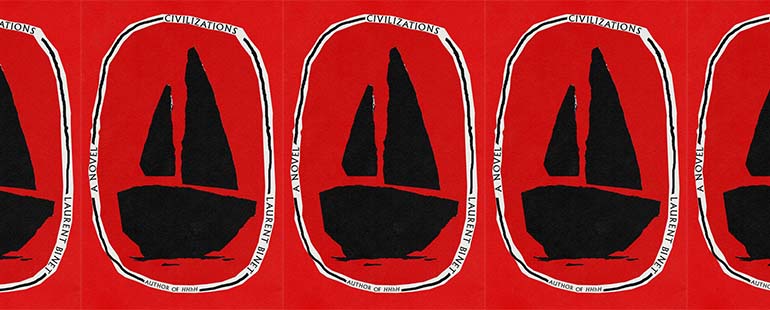Laurent Binet’s Alternate History of the Novel

What if the Spanish conquest happened in reverse? This is the premise of Laurent Binet’s newest novel Civilizations, out last month in English translation by Sam Taylor, a centuries-spanning epic that posits a world in which the Incan Empire colonizes Spain. Getting there requires fewer counterfactuals than you might imagine: in Binet’s telling, all it takes is a small band of Vikings from Leif Eriksen’s Newfoundland colony wandering south after a murderous dispute. Spreading smallpox and losing track of the occasional horse, they wander down the Atlantic coast until they disappear from history. Yet the Vikings’ brief sojourn gives the denizens of the “New World” the necessary ingredients to defeat Christopher Columbus when he arrives to Hispaniola in 1492: they’re inoculated against European disease, and they don’t mistake grubby conquistadors on horseback for otherworldly visitors. In short order, they ambush Columbus’s troops and turn him into a court jester. Ferdinand and Isabella of Spain, disappointed by Columbus’s disappearance, retire from the business of sending ships overseas.
Fast forward to the early 1500s, and the Incan emperor Atahualpa, fleeing his homeland of Peru after losing a civil war to his brother, decides to retrofit some of Columbus’s abandoned ships and see what lies eastward across the ocean. Armed with supplies of Incan gold and arriving to a Portugal reeling from the Lisbon Earthquake of 1531, Atahualpa manages to cut a swathe across Western Europe and, eventually, usurp the throne of the Holy Roman Empire.
With such an action-packed and adaptation-friendly premise—reportedly, a TV production is already in the works—Civilizations reads initially as a major departure for Binet, whose first two novels were sly postmodern confections powered by arch metafictional conceits. In HHhH (2010), Binet’s narrator repeatedly interrupts his story of the assassination of Nazi security director Reinhard Heydrich to ruminate on the morality and limits of the fiction-writing process. (Is it ethical, for example, for Binet to pretend to know whether Heydrich’s Mercedes was black or green?) In The Seventh Function of Language (2015), the accidental death of semiotician Roland Barthes is recast as a murder mystery reaching deep into the heart of the Parisian intellectual world of the 1980s—until the investigator begins to suspect he might himself be the protagonist of a book. Brimming with high-concept hijinks and fourth-wall-breaking overtures to the reader, these novels were crafted to blow into smithereens their respective genres of historical fiction and detective story in order to reconstruct them from the inside out.
Civilizations, in contrast, unfurls at a statelier pace. Its writing has a more traditional, archaic quality, mimicking the primary sources from which its counter-history derives. The Viking section reads like an Icelandic Saga; the Columbus section reads like a succession of letters to Ferdinand and Isabella; and the Atahualpa section—the core of the book—is presented as a wholly original Incan epic, stylistically modeled on Titu Cusi’s Inca Account of the Conquest of Peru (Taylor does a brilliant job capturing these different registers in lively but period-specific English prose). Yet as the novel’s preoccupations unspool themselves and its grandiose plot ensnares you in its webs, it becomes clear that Binet has once again delivered a provocatively gift-wrapped postmodern fable, culminating in a new origin story for the novel itself. Ultimately, Binet’s elaborate counterfactuals offer a recursive vision of history: you can swap out the protagonists, but the processes of social atomization and economic consolidation unleashed by globalization will propel us into the modern era regardless.
For a while, it seems as if things might play out quite differently. Like Cortés in Mexico, Atahualpa arrives to Europe with a tiny army (“183 people, 37 horses, one puma, and several llamas”), yet surveys the landscape to discover a civilization fractured by internal rivalries and ripe for takeover by a savvy operator. Spain is at war with France and the Ottomans, England is squabbling with the pope, and everywhere people are getting riled up by an obscure German monk named Martin Luther (throughout the book, much humor is derived from Atahualpa’s inability to comprehend why devotees of “the nailed god”—Binet’s made-up Incan term for Jesus—get so triggered by people who fail to “share their beliefs in every detail”). Atahualpa realizes that a well-timed kick might send the whole facade crumbling, so he seizes the city of Seville and declares it a zone of religious freedom for all “conversos, Moors, witches, bigamists, fanatics, and Lutherans, whatever those names might actually mean.” Step by step, all narrated by Binet with relentless forward gusto, Atahualpa ascends the leaderboard of Europe’s game of thrones and expands his empire to include Portugal, Spain, the Dutch lowlands, and most of Austro-Germany.
Atahualpa’s biggest tactical advantage is a limitless supply of gold from the kingdom of Peru, which allows him to put an end to taxation and inaugurate something of a social revolution within feudal Europe. Religious freedom flourishes. Private ownership of land is abolished. Erecting a planned economy around potatoes and maize (in place of those “little white llamas that proliferated all over Spain”) eradicates hunger, allowing populations to thrive despite the recurrent plagues and famines endemic to a time before agricultural and medical science. At this juncture, readers might suspect Binet is setting up Atahualpa to be a kind of enlightened despot—holding up an inverse mirror to Europe’s Renaissance monarchs, who in real life kicked off the project of Enlightenment at the expense of a world population they were busy grinding under their heels. Under the Inca, colonization doesn’t look so terrible.
Things take a turn for the worse, however, when the Aztecs arrive to Europe. In a reprise of Portugal and England’s efforts to find new territories on the heels of Spain, the Aztecs catch wind of Atahualpa’s burgeoning empire and decide to declare unconquered France their own domain. An army led by Cuauhtémoc, one of Montezuma’s generals and a key figure in Bernal Diaz’s Conquest of New Spain, runs roughshod over Paris and erects a giant pyramid in the Louvre, transforming its grand courtyard into a theater for human sacrifice. Atahualpa’s monopoly on global trade is imperiled, and his grip on power becomes more tenuous. Goodbye to the days of no taxes.
Episodes like these make for some of the singular and, to my mind, utterly original pleasures of Binet’s novel. Shocking in the moment, these twists in the counter-historical threadwork reveal themselves to be remorselessly logical as they unfold. (Of course the Aztecs would want a piece of the European pie.) What results is a peculiar and original reading experience that Binet seems to be pioneering over the course of his three books thus far, somewhere between a real-time strategy game and a grand Rube Goldberg device. As each wave of dominoes tumbles across the invented world, Bidet invites you to match historical wits and see if you can guess the next ramification before it arrives.
This dynamic is interrupted in the fourth and final section of the book, an amusing coda that takes the form of a mock sixteenth-century chivalric romance. Our hero is Miguel de Cervantes, beating a picaresque path across post-Atahualpan Europe. Like the real Cervantes, he fights in the Battle of Lepanto—this time waged between the “Quitonians” and the Turks—and wanders aimlessly around the Continent, sometimes a soldier, sometimes a captive. A twist of fate brings him to the castle of Michel de Montaigne in the company of a choleric Greek painter and fellow drifter named “El Greco.” Here, Cervantes enjoys a strange confabulation with the inventor of the essay and the inventor of modern painting, after which Cervantes and El Greco set off for the old world (i.e. Mexico) to pursue their destinies. In Cervantes’s case, this presumably entails the writing of Don Quixote—the novel that, in Harold Bloom’s words, “contains within itself all the novels that have followed in its sublime wake.” Binet’s final counterfactual, in other words, ushers us full circle into the modern era. In classic metafictional fashion, all paths point back to the novel.



